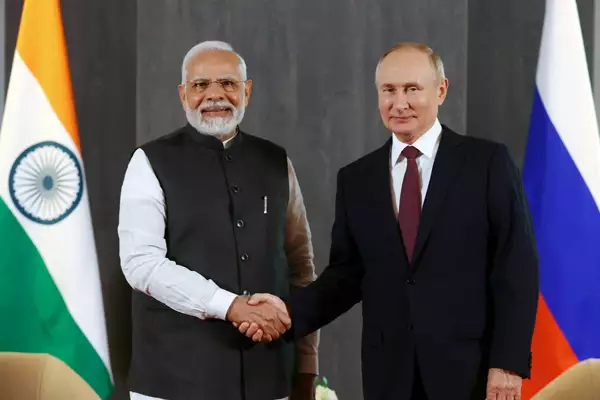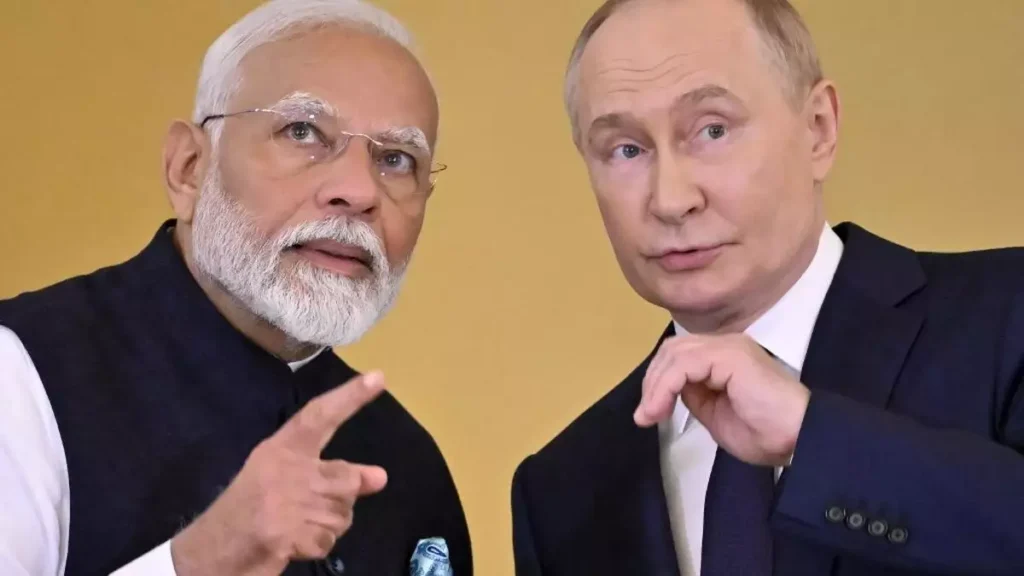Prime Minister’s visit strengthens India-Russia relations, aiming for $100 billion trade by 2030 and emphasizing peace and diplomacy in Ukraine.
Content
- Introduction
- Geopolitical Balancing
- Economic and Trade Relations
- Military and Strategic Cooperation
- Conclusion
- Frequently Asked Questions (FAQs)
Introduction
- The visit showcased India’s adept handling of complex global relations and diplomatic finesse.
- India’s commitment to peaceful resolutions was evident in its discussions on geopolitical issues like Ukraine.
- The strategic importance of maintaining strong relationships with major global powers was emphasized, especially in the context of regional and international tensions.
Geopolitical Balancing
- The discussions highlighted India’s strategy of maintaining strategic partnerships and emphasized the creation of a multipolar world.
- India’s nuanced stance on Ukraine advocates for peace and dialogue, emphasizing diplomacy and adherence to international law.
- Potential future mediation efforts were hinted at, which could pave the way for negotiations based on the joint statement.
Economic and Trade Relations
- There has been significant growth in trade, with figures rising from $10 billion before February 2022 to $65.7 billion in the last financial year.
- The two sides discussed overcoming economic challenges like trade imbalances and payment issues arising from sanctions.
- New sectors such as agriculture and automotive were explored for potential trade growth.
- Efforts to intensify maritime and land connectivity projects were discussed, including the International North-South Transport Corridor and the Chennai-Vladivostok and Arctic Ocean Northern maritime corridors.
Military and Strategic Cooperation
- Discussions likely covered ongoing military cooperation, focusing on the potential local production of military spares and weapon systems under the ‘Make in India’ initiative.
- The joint statement hinted at addressing issues related to the flow of military spares and delays in weapon platform deliveries.
- These discussions are part of broader efforts to make bilateral defence ties more resilient in the face of current geopolitical realities.
Conclusion
The diplomatic engagement reaffirmed the longstanding partnership and highlighted advancements across various sectors. Economic interactions have seen a substantial uptick, reflecting strategic depth in overcoming global sanctions through innovative payment mechanisms and diversified trade. The commitment to addressing global geopolitical challenges, particularly the situation in Ukraine, underscores a commitment to diplomacy and international norms. The visit signifies a crucial step in fortifying bilateral relations, ensuring their evolution in line with current and future global dynamics.
Ref: Source
| UPSC IAS Preparation Resources | |
| Current Affairs Analysis | Topperspedia |
| GS Shots | Simply Explained |
| Daily Flash Cards | Daily Quiz |
Frequently Asked Questions (FAQs)
What is multipolar world?
A multipolar world is one in which multiple nations hold significant power, as opposed to one or two superpowers dominating global affairs, promoting a more balanced global power distribution.
How does India’s stance on Ukraine reflect its diplomatic approach?
India’s stance on Ukraine, advocating for peace and dialogue, underscores its diplomatic finesse and adherence to international law, aiming for a balanced approach in geopolitical conflicts.
What is meant by ‘geopolitical finesse’?
Geopolitical finesse refers to skillful handling of international relations and diplomacy, particularly in balancing interests and resolving conflicts among different countries.
What are the goals of the International North-South Transport Corridor?
The International North-South Transport Corridor aims to intensify maritime and land connectivity, facilitating quicker and more efficient trade routes between India and other countries involved.


